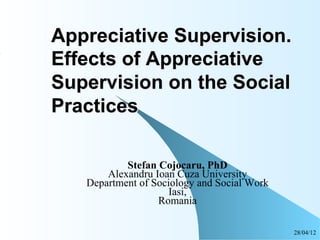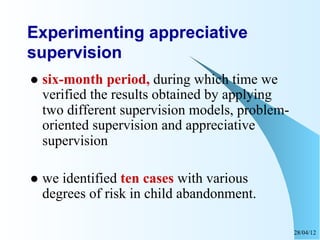1. The document describes an experiment comparing the effects of appreciative supervision versus problem-focused supervision on social work practices.
2. Ten social work cases involving risk of child abandonment were paired and one case in each pair was supervised using an appreciative approach while the other used a problem-focused one.
3. Results showed that cases under appreciative supervision saw greater reductions in abandonment risk levels, with improvements attributed more to strengthened family relationships than just addressing financial needs.



















